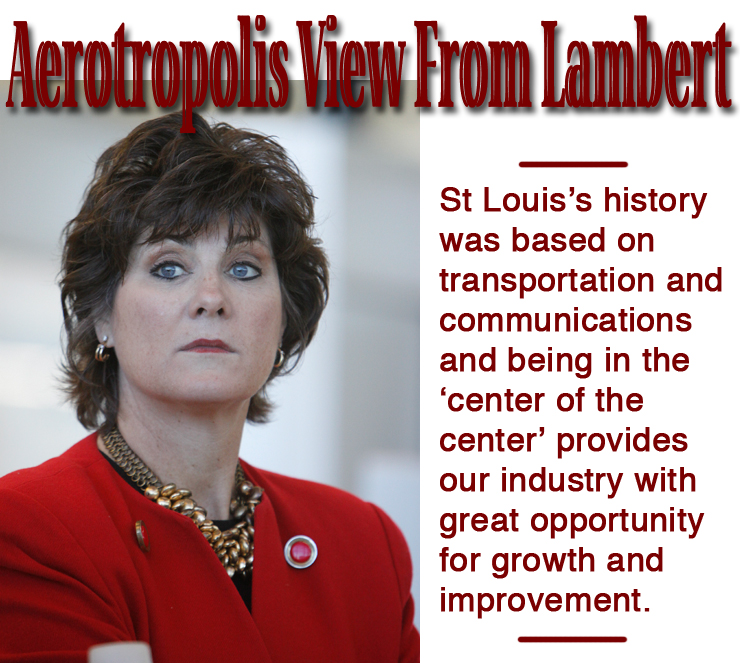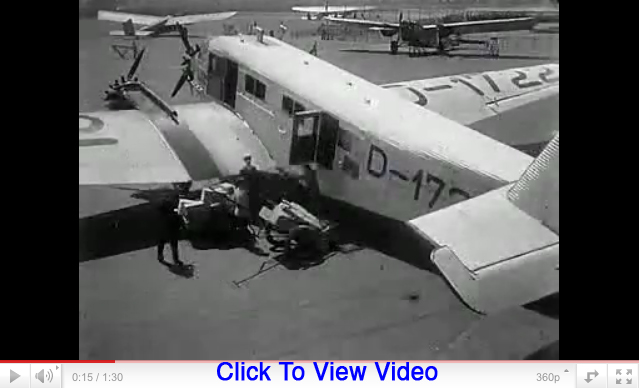
Dear Geoffrey:
As Director of Airports for the City
of St. Louis, I have been an avid follower of your publication. Like
many others, I respect your reporting and rely on the information you
provide.
You were kind enough in your June 14,
2011 issue to feature our rapid recovery from the EF 4 tornado that
recently hit our Airport.
In your recent issue, you discussed the
concept and the book Aerotropolis. It was of great interest since the
City of St Louis and State of Missouri have been studying and considering
the concept for the last four years.
You also ran a lengthy article from Michael
Webber that was critical of our efforts in St. Louis. Your Editor's
note did disclose that Mr. Webber is currently on assignment for the
City of Chicago Department of Aviation. Many of your readers may not
have noticed this small print disclosure, but at very best it would
indicate a conflict of interest and may explain a distortion of the
facts.
We hope that with this understanding,
your readers will be able to decide for themselves whether Mr. Webber
was making a well-reasoned argument against St. Louis, or has another
agenda.
Mr. Webber implied that we tackled this
initiative with very little thought, study or planning. That makes us
suspicious of his motives, because the opposite is true. We thought
long and hard, planned for years, conducted studies, had scores of rubber
chicken dinners, and looked at spread sheet after spread sheet before
concluding that the opportunity was real and attainable.
We did significant independent research.
For instance, in 2009, we engaged Guenter Rohrmann and his consulting
company, AeroStrada, to fully analyze the potential for developing a
primary Midwest Cargo Hub at Lambert-St. Louis International Airport.
He concluded the potential was there.
We hired Stephen Perry of the London
Export Corporation and chair of The 48 Group to help build a close relationship
with key people in the Chinese government, business community and aviation
industry. His company, started by his father, has worked in China for
the past 60 years. They have unparalleled experience, insight, and access.
President Nixon’s administration called upon them to gain a better
understanding of China before the opening of China/U.S. relations. Over
the last four years, Perry not only helped us build relationships, he
was instrumental in helping us convince the Chinese that an international
cargo hub would work in St. Louis. As a result, China Cargo Airlines
is currently in discussions with Lambert and multiple airport vendors
for future air cargo service.
Most recently the RCGA (St. Louis Regional
chamber & Growth Association) engaged Princeton-based Biggins Lacy
Shapiro in tandem with the international logistics advisory firm Institute
St. Onge, to produce an Economic Impact Study of the introduction of
international air cargo services in St. Louis.
I have attached a copy of the impact
study for your review.
This combination of AeroStrada, London
Export Corporation, Biggins Lacy Shapiro and Institute St. Onge can
hardly be classified as “performing a meager analysis” or
“without any independent analysis,” as Mr. Webber alleged.
Furthermore, the Missouri Department
of Transportation and the Center for Engineering Logistics & Distribution
of the University of Missouri made an air and ground traffic comparison
between St Louis and Chicago. They concluded St. Louis will be competitive.
We understand that we are entering a
new market. We understand that to do so means we will have to provide
incentives in the early years.
So, after four years of diplomatic missions,
business meetings, study and debate, we introduced legislation in the
Missouri General Assembly. The legislation calls for a total of $360M
in tax credits over an eight-year period (not $400M as stated in the
article..) Sixty million dollars is directly related to supporting new
air cargo export activity through an incentive for freight forwarders.
These credits require that investment or export activity take place
before the application for tax credits.
The other $300M in tax credits (over
eight years) will be focused on attracting investment in jobs related
to international air cargo service: distribution, warehousing, freight
forwarding, manufacturing and value added production. This could create
millions of square feet of industrial capacity for companies who want
to handle, distribute, assemble, and manufacture goods going to and
from China and other International markets. It will be an enormous opportunity
to create wealth and jobs.
As I indicated at the outset, this article
by Michael Webber is full of factual errors and clearly misleading,
specifically with regard to airport funding. We fully understand our
responsibilities under the current FAA funding system and plan on using
the existing cargo facilities for all new activity. To accommodate future
growth, we have entered into a development agreement with Aeroterm,
a well known private developer of airport properties, to develop 88
acres owned by the Airport. There are hundreds of acres of nearby land
that is also suitable for development of facilities related to international
air cargo.
We strongly believe that in this part
of the country, there is a need for an alternative to O’Hare and
feedback from shippers and forwarders confirms this. Chicago has a great
airport and it will always serve the world from a passenger and cargo
perspective but it has its challenges, frustrations and limitations
which provide an opportunity for competition and creativity. We believe
we are on the right track since this strategy has generated interest
beyond China extending into other international markets.
St Louis’s history was based on
transportation and communications and being in the ‘center of
the center’ provides our industry with great opportunity for growth
and improvement.
Sincerely,
Rhonda Hamm-Niebruegge
Airport Director
Lambert-St. Louis Int'l Airport
314-426-8020
rkhamm-niebruegge@flystl.com
|





![]() 100%
Green
100%
Green